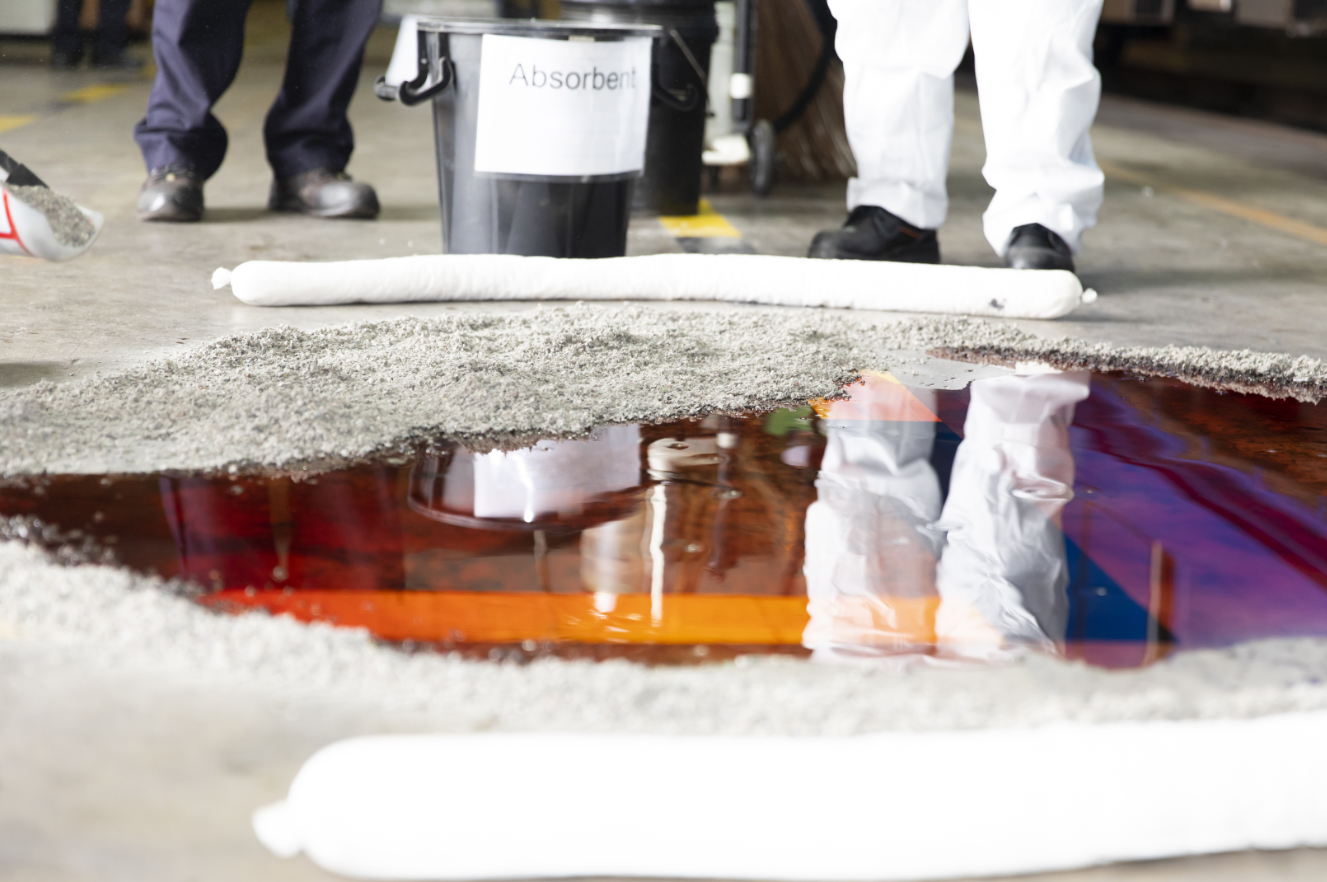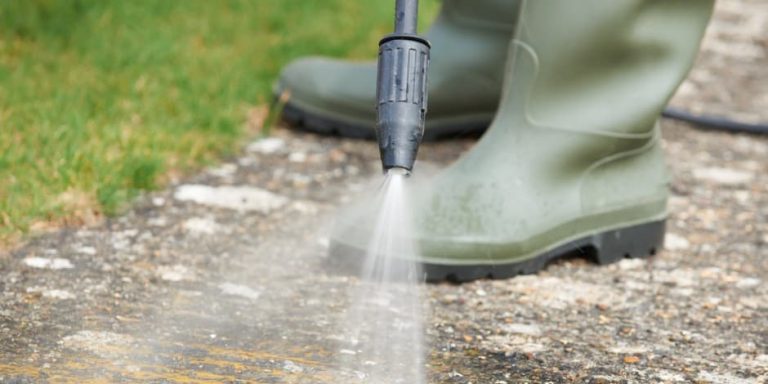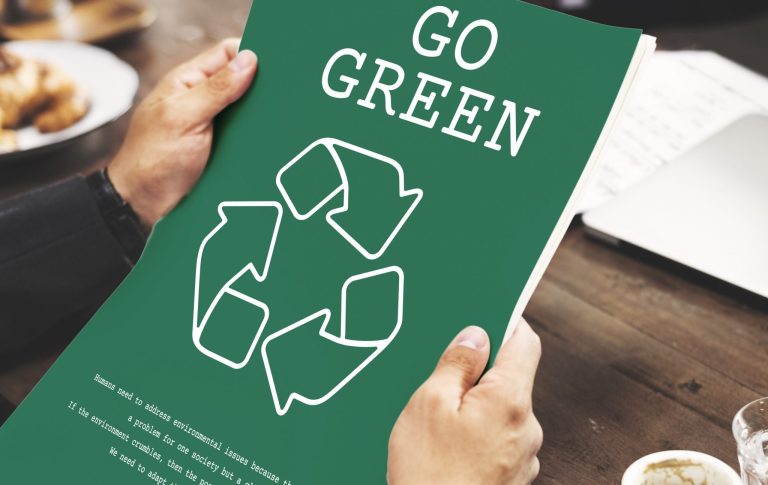
Power washing is a fast and effective cleaning method—but it also comes with environmental risks, especially when chemical cleaners or degreasers are involved. A single spill or uncontrolled runoff can quickly turn into an environmental emergency, polluting soil, harming aquatic life, or violating local and federal regulations.
Whether you’re a mobile pressure washing contractor, a property manager, or part of a municipal cleaning crew, knowing how to respond to a chemical spill is critical. In this article, we’ll explore how to prevent, contain, and respond to power washing-related spills safely and responsibly. 🧼⚠️
💣 What Counts as an “Environmental Emergency”?
Not every puddle of dirty water qualifies—but if chemicals, soaps, oils, or wastewaters from power washing enter the environment, it may trigger an emergency response.
Examples include:
- Degreaser spilling into a storm drain
- Bleach-based runoff reaching a pond or stream
- Chemical soap leaking into landscaping or garden beds
- Pressure-washed oil from a parking lot entering a drainage ditch
- Spills on porous surfaces that could contaminate groundwater
If it can harm soil, plants, animals, or water quality—it’s a problem. 💥🌿
🧪 Common Spill Culprits in Power Washing
The most frequent hazardous substances involved in pressure washing include:
- Chlorine bleach (sodium hypochlorite)
- Degreasers with solvents or petroleum bases
- Acid-based cleaners (used for concrete or rust removal)
- Paint flakes or graffiti remover residue
- Oil, fuel, and grease from machinery or vehicles
- Heavy metals from washing old buildings or signs
Many of these are not biodegradable and can cause long-term contamination if not contained. ❌🧴
🚨 Immediate Steps to Take During a Spill
If a chemical spill occurs during or after a power washing job, quick action can mean the difference between minor cleanup and a costly environmental violation.
1. Stop the Source
Immediately shut off the power washer and stop any further chemical application.
2. Protect Drains and Waterways
Use:
- Drain covers
- Sandbags
- Spill berms
- Socks or booms
Block off any nearby gutters, storm drains, or curb cuts. ⛔🌧️
3. Contain the Spill
Use absorbent pads, kitty litter, or dry sweep materials to soak up the chemical. Create a barrier with absorbents if the liquid is spreading.
4. Notify Supervisors or Site Managers
Always escalate the situation to whoever is responsible for environmental compliance on-site.
5. Report If Required
If the spill reaches stormwater systems or natural waterways, you may be legally required to report it to:
- Local environmental agencies
- City or county water departments
- The U.S. EPA (in serious cases)
Failure to report can result in hefty fines or legal action. 📞📑
🧰 What Should Be in Your Spill Kit?
Every mobile power washing rig or job site should have a basic spill response kit. It should include:
- Absorbent mats or pads
- Oil dry or granular absorbent (like kitty litter)
- Nitrile gloves and goggles
- Chemical-resistant bags or containers
- Drain covers or rubber mats
- Spill containment socks or berms
- Emergency contact list and reporting forms
A well-stocked kit can contain most minor to moderate spills quickly. 🚚🧯
⚖️ Legal and Regulatory Risks
Depending on the size and type of the spill, failure to respond appropriately can trigger:
- Fines of $1,000 to $25,000+ per incident
- Lawsuits or cleanup cost reimbursements
- Contractor license suspension
- Negative press and loss of business
Under the Clean Water Act, you are prohibited from allowing pollutants into waterways without a permit. Even “biodegradable” soaps may be subject to regulation when they mix with grease, paint, or solvents in runoff.
📋 Long-Term Spill Prevention Strategies
Spill response is important—but spill prevention is even better. Here are key strategies to reduce the risk of accidents:
1. Pre-Job Risk Assessments
Before any job begins, inspect the site for:
- Nearby storm drains
- Slopes or water flow direction
- Drainage basins or sensitive vegetation
- Previous spills or staining
Plan accordingly and place containment measures ahead of time. 🧠
2. Label and Secure All Chemicals
Use proper secondary containment for all liquid containers. Make sure containers are:
- Clearly labeled
- Properly sealed
- Stored upright in locked compartments or bins
Avoid transporting chemicals in open buckets or makeshift containers.
3. Train Staff in Spill Response
All crew members should know:
- What to do when a spill occurs
- How to use the spill kit
- When to escalate and report
- What documentation to complete
Regular training = fewer accidents + faster responses. 💼📚
4. Use Eco-Safe Alternatives
Choose:
- pH-neutral, biodegradable cleaners
- Solvent-free degreasers
- Cold water methods where appropriate
This reduces the severity of a potential spill and lowers your liability.
📖 Document Everything
After any spill—big or small—document:
- What happened and when
- The amount and type of chemical spilled
- Where it spread
- How it was contained
- Whether it was reported
- What was done to prevent future spills
Store these records for legal protection and insurance purposes. 🗂️✅
🧠 Final Thoughts
Power washing is a valuable service—but when chemicals are involved, safety and environmental stewardship must come first. Whether you’re spraying a small sidewalk or a large industrial complex, spills can happen—and how you respond makes all the difference.
With proper training, spill kits, eco-friendly products, and emergency plans, you can ensure your power washing business stays clean in more ways than one. ♻️💧
Don’t just clean up the mess—clean responsibly.
Browse Amazon Here For Popular Pressure Washers And Accessories






